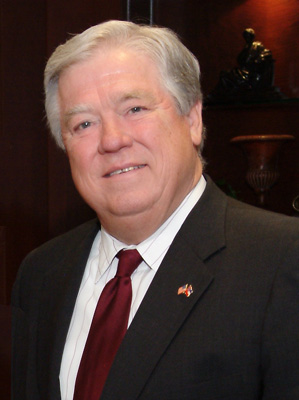
The plant will is designed for 150,000 vehicles a year, with production starting by 2010. For Mississippi, it was another win in the race of the Southern states to attract automotive investments.
Mississippi is in the middle of the rapidly emerging “Southern Automotive Corridor”. In late 2000, Mississippi enjoyed its first win when Nissan North America announced it would locate a US$ 930 million assembly plant just north of Jackson. In 2002, Nissan pumped in another US$ 1.4 billion. This plant recently set a North American record in producing a million autos in just under four years.
Mississippi is home to over 90 automotive manufacturing, distribution and supplier companies. These include Mazda, Cooper Tire & Rubber, Caterpillar, Delphi Automotive Systems, Johnson Controls, Tower Automotive and Visteon. There is a BMW regional parts distribution center in north Mississippi. PACCAR, maker of DAF, Kenworth and Peterbuilt trucks recently announced the location of its first US diesel engine plant in Mississippi.
The state government offers a structured legislative package providing tax incentives, employee training resources, infrastructure planning, government support, and the establishment of key relationships with universities and agencies within the state. The program also provides resources for training, infrastructure, university research, and other special needs. The Mississippi Development Authority and the Mississippi Employment Securities Commission as well as the state’s community and junior colleges, and other workforce-training organizations coordinate efforts to make the most of every dollar available for training, retraining and education.
Automotive Industries spoke to Mississippi Governor Haley Barbour and Gray Swoope Executive Director, Mississippi Development Authority. We asked what Mississippi initiatives in the pipeline would attract foreign direct investment into the state.
Barbour: During the past three years, Mississippi has been working hard to further enhance its business climate: tort reform; workforce training; no new taxes. The state last year passed a list of new incentives called Momentum Mississippi that gives us the ability to compete in all sectors of today’s economy. It is a valuable element in the state’s strategic economic development plan because it opens new horizons, gives state ability to compete very successfully in the automotive sector, as well as other sectors. More importantly, companies like the flexibility of Momentum Mississippi.
AI: Why is it important for Mississippi to attract automotive investment?
Swoope: The state of Mississippi researched what business and industry look for and matched it to the resources that communities in the state have to offer. From this, the state targeted fifteen specific industry sectors to actively pursue, including the automotive sector. The automotive industry offers a good return on investment. For the Toyota project, the state of Mississippi compiled an incentive package totaling US$ 296 million, which included the site and site preparation, infrastructure improvements and job training and recruitment. As a result, Mississippi anticipates state tax revenues of roughly US$ 235 million from the facility over the first 10 years of operations. With an annual payroll estimated at US$ 328 million, the state will benefit further from sales tax and other revenue as the money turns over in the communities.
AI: What are advantages your state can offer automotive companies?
Swoope: Mississippi offers a fair legal climate, low taxes, a skilled workforce, available land, workforce training and a dynamic, pro-business climate. The state has also streamlined regulations, both environmental and labor.
For Mississippi, economic development is a team sport. Under the direction of the governor, we have an excellent team – the state’s economic development professionals, communities, Mississippi’s legislators and the state’s congressional delegation – that work together to provide a competitive package.
In their own words, the primary reasons Toyota selected north Mississippi was the quality of the workforce and the leadership in the communities. The labor force, which exceeds 1.3 million, is both motivated and productive. These workers are experienced in assembling and building quality products ranging from automobiles, ships, aircraft and furniture to defense weapons
Toyota investment
• Toyota’s Investment $1.3 Billion – $330 million in buildings, $970 million in equipment
• 2,000 Initial Direct Jobs (Toyota)
• 2,000 Estimated Indirect Jobs (Suppliers)
• 2,300 Estimated Construction Jobs
• Annual Payroll Estimated at $328 Million
• Annual Estimated Fee in Lieu Property Tax of $1.1 Million to PUL Schools
PACCAR Investment
• Investment $300 Million
• 500 Initial Direct Jobs
• Annual Payroll Estimated at $18 Million
• Annual Estimated Fee in Lieu Property Tax of $1.4 Million
• Estimated Production to begin 2010












More Stories
DuPont materials science advances next generation of EV batteries at The Battery Show
How a Truck Driver Can Avoid Mistakes That Lead to Truck Accidents
Car Crash Types Explained: From Rear-End to Head-On Collisions